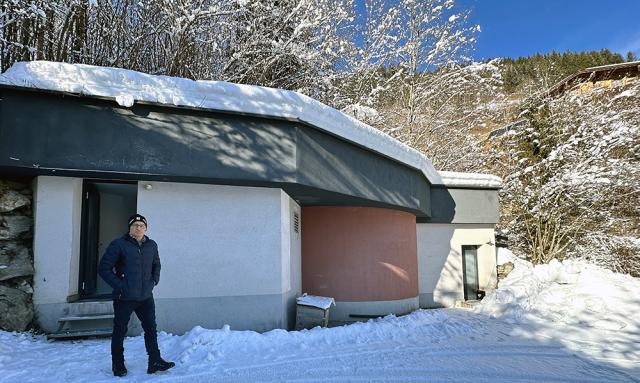
Waterworks
Chemical-free limescale protection ensures high drinking water quality
It is the water utility's responsibility to ensure optimal drinking water quality and hygiene safety. For example, an outbreak of legionella bacteria would be catastrophic for the water utility and, above all, for the users of the water. One of the most important factors in the protection of drinking water quality is the prevention of limescale deposits in pipework and installations. Therefore, BIOCAT systems must provide highly effective limescale protection.
Waterworks users are increasingly emphasizing sustainability and promoting green and resource-saving technologies. With high water consumption, it is a noticeable environmental benefit that the Watercryst- technology works without the use of salt and phosphates - and that the BIOCAT systems are 100 percent chemical-free. Many users also appreciate the fact that BIOCAT limescale protection does not alter the natural mineral content of the drinking water - and above all, that the drinking water retains its good, natural flavor.
Save time, money and space
Apart from the mandatory granulate change every five years, the systems are virtually maintenance-free. This means you can save both time and resources by choosing a BIOCAT system. Since the systems are compactly designed and there is no need to store consumables, you can also save a lot of space in the technical room.
BIOCAT systems are hand-assembled quality systems from Austria, and there are currently more than 100,000 systems in operation across most of Europe.
BIOCAT limescale protection systems are cost-effective:
- The systems can be connected in series for larger requirements.
- Fixed, low operating costs regardless of changes in the lime content of the water.
- By far the cheapest operation of large systems.
- Optimal cost planning with service contracts.
- Inexpensive and simple installation.
Facts and figures
What is hard water?
Hardness is defined as the water's total dissolved calcium and magnesium content - and is dependent on the type of water in the subsoil where each waterworks extracts water.
In Denmark, the degree of hardness is measured and indicated in German degrees of hardness (°dH = grad Deutsche Härte). One degree of hardness is equal to 10 mg of dissolved calcium oxide per liter or 7.19 mg of dissolved magnesium oxide per liter.
Hardness is categorized according to this scale:
- 0-8 °dH = soft and very soft water
- 8-12 °dH = Medium hard water
- 12-18 °dH = Fairly hard water
- 18-24 °dH = Hard water
- 24-30 °dH = Very hard water
- 30 °dH or more = Extremely hard water
Where is the water hardest?
Dragør is the municipality in Denmark with the highest degree of hardness - i.e. where there is the most calcium in the water. Here, the °dH value is above 30, which is labeled as 'extremely hard'.
In general, the water is hardest on Zealand, Falster, Lolland, Møn, and Funen. Jutland has the most soft and medium-hard water, but there are also areas where the water is hard in the western part of Denmark.

A mountain village defied the lime with chemical-free water treatment
Winter can be harsh in the mountain village of Großarl in the Alps. Temperatures of - 20° degrees Celsius are not uncommon. But a water hardness on the wrong side of 20 °dH is still too harsh for even the hardy mountain dwellers. That's why the village water co-operative set out to find an effective lime protection solution. The requirement was that the solution - in addition to being effective - had to be chemical-free.
You can read the full story here.

